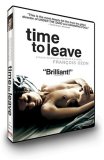| Reviews & Columns |
|
Reviews DVD TV on DVD Blu-ray 4K UHD International DVDs In Theaters Reviews by Studio Video Games Features Collector Series DVDs Easter Egg Database Interviews DVD Talk Radio Feature Articles Columns Anime Talk DVD Savant Horror DVDs The M.O.D. Squad Art House HD Talk Silent DVD
|
DVD Talk Forum |
|
|
| Resources |
|
DVD Price Search Customer Service #'s RCE Info Links |
|
Columns
|
|
|
Time to Leave
THE MOVIE:
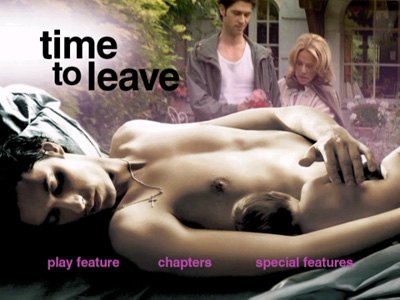
Time to Leave is a lean character study from French writer/director François Ozon (5X2). It's the story of Romain (Melvil Poupaud, Le Divorce), a fashion photographer in his early '30s who has just learned he has cancer. The doctor predicts that Romain has very little time left, and though he recommends chemotherapy, since he only gives it a 5% chance of working, Romain decides against it. Part of it is vanity, he can't stand the idea of his hair falling out; the rest of him embraces the futility.
Romain has always been a selfish person, and the tendency is hereditary. His father (Daniel Duval, Caché) can only express himself by worrying on behalf of others and reveals that he simply never learned to talk about himself. His grandmother, Laura (the legendary Jeanne Moreau), whom Romain most closely resembles, abandoned her child after she became a widow because she wanted to live life to its fullest. Romain knows no other way of being. He has skated across superficial surfaces all his life. When the time comes for him to inform his family that he is ill, he can't do it. Instead, he makes a decision to live his last days totally alone, dispensing with his lover Sacha (Christian Sengewals) and cutting himself off from everyone else.
The first instinct is to throw himself into decadence, cruising gay clubs and seeking some kind of connection. Rather than pick up a cheap date, however, Romain turns inward and starts exploring who he is. He visits places that were important to him when he was growing up, reliving memories of himself as a child (portrayed by first-time actor Ugo Soussan Trabelsi). He mends some bridges and takes pictures of people and places he sees with his digital camera.
He also becomes involved with a childless couple he meets on the road to his grandmother's. Jany (Valeria Bruni Tedeschi, Munich) tells him that the reason they are without any offspring is that her husband is sterile, and she asks Romain if he will have sex with her in the hopes of impregnating her. Romain considers it, for the first time wondering about what he will leave behind. If he goes through with it, it would be a pointedly mature choice for him. All throughout Time to Leave, he's been particularly venomous about children, even widening the rift between himself and his sister (Louise-Anne Hippeau) as a result.
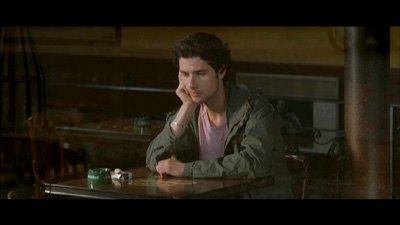
Time to Leave rides entirely on Melvil Poupaud's shoulders. He's in every scene, often silent and watching the world around him. As his appearance grows increasingly gaunt, Poupaud also registers the disintegration in his movements and expressions. At the same time, he's taking the character from complete self-absorption to engaging with the life that's all around him.
For such a downer of a plot, Time to Leave moves at a swift pace. Ozon doesn't allow the film to linger too long, to get caught up in self-pity, moralizing, or exposition about what Romain is going through. As a storytelling choice, it's both good and bad. While it allows the picture to avoid the cheap sentiments of a disease-of-the-week television movie, it also causes Time to Leave to feel like it's a lot less than the subject might demand. Some of the situations that Romain gets into, like his relationship with the barren couple, don't get as much screen time as they maybe deserve. It feels like there should be more here to puzzle out. Like Romain pre-diagnosis, Time to Leave stays very much on the surface and doesn't seem to require further observation.
That said, with simplicity being Ozon's goal, he is more than successful at the close of the film. The beautifully shot, poetic final scenes do quite a lot with very little, and for whatever misgivings I had about the depth of the story leading up to it, the director made me care about Romain far deeper than I had realized. Though I'm not sure it's a film I'll revisit again, the lasting effect of Time to Leave isn't likely to fade anytime soon.
THE DVD
Video:
The transfer for Time to Leave is shown in letterbox for widescreen television sets. François Ozon and his cinematographer Jeanne Lapoirie, whom the director previously worked with on 8 Women, go for a very natural look in the film, something which is most evident in the outdoor scenes. In his last days, Romain relishes the sunlight on his face, and you can almost feel the warmth coming off the screen.
Sound:
The soundtrack is in the original French with permanent English subtitles.
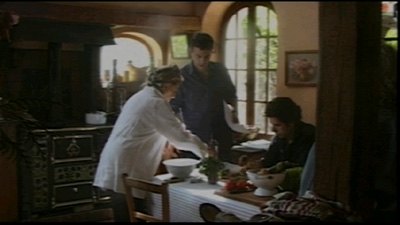
Extras:
Eighteen minutes of deleted scenes show just how much Ozon worked to create a tight film. A lot was trimmed, so it was clearly his intention to get down to the heart of the matter. A lot of the sequences cut show more flashbacks to Romain as a child.
There is a "Making of..." feature that is rather extensive. At 78 minutes, it is only eight minutes shorter than the film itself! The feature showcases extensive raw footage from the set, with a lot of attention paid to discussions between the director and his actors in preparation for the day's shooting. Some of the problems the crew encounters are bizarre, such as how you really only get one take when it comes to shaving someone's head or when an injury on Christian Sengewals' nose turns into a disgusting and potentially scarring problem. How do you deal with make-up on a raw bit of skin? Some might also want to know ahead of time that the sex club scene is far more graphic in the "Making of..." than it is in the film. The Romain character ends up in the basement spying on the rough trade. In the actual movie, most everything stays off camera; in the documentary, you see more of the preparation for some shocking acts.
Finally, the bonus section has the original theatrical trailer for Time to Leave and trailers for four other movies from Strand Releasing.
NOTE: This DVD was sent for review without any of the official packaging.
FINAL THOUGHTS:
I'm a little torn as to how much to recommend Time to Leave. While the movie is an effective portrayal of a man dealing with his own impending death, writer/director François Ozon may have cut the final product too close to the bone. In some cases, the story only brushes lightly against some of the issues that arise, and even though it hits the mark in the end, Time to Leave lacks the weight that would invite multiple viewings. There just doesn't seem to be anything to dig for that you won't get on one run-through, and on that basis, I suggest you Rent It.
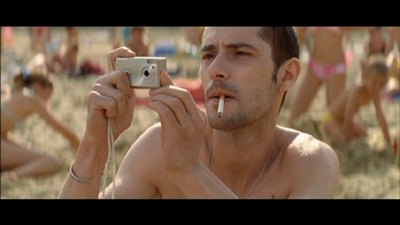
Jamie S. Rich is a novelist and comic book writer. He is best known for his collaborations with Joelle Jones, including the hardboiled crime comic book You Have Killed Me, the challenging romance 12 Reasons Why I Love Her, and the 2007 prose novel Have You Seen the Horizon Lately?, for which Jones did the cover. All three were published by Oni Press. His most recent projects include the futuristic romance A Boy and a Girl with Natalie Nourigat; Archer Coe and the Thousand Natural Shocks, a loopy crime tale drawn by Dan Christensen; and the horror miniseries Madame Frankenstein, a collaboration with Megan Levens. Follow Rich's blog at Confessions123.com.
|
| Popular Reviews |
| Sponsored Links |
|
|
| Sponsored Links |
|
|
| Release List | Reviews | Shop | Newsletter | Forum | DVD Giveaways | Blu-Ray | Advertise |
|
Copyright 2024 DVDTalk.com All Rights Reserved. Legal Info, Privacy Policy, Terms of Use,
Manage Preferences,
Your Privacy Choices | |||||||









